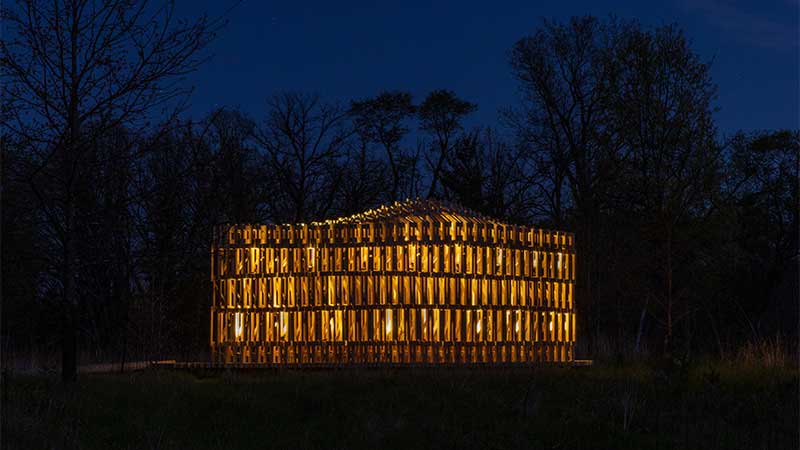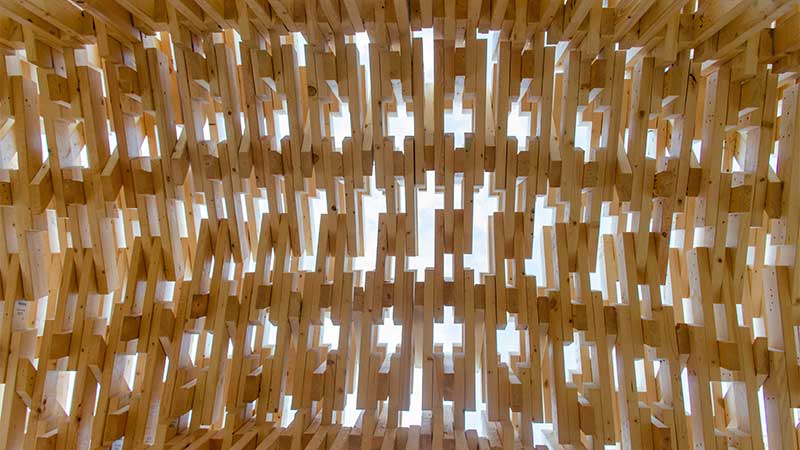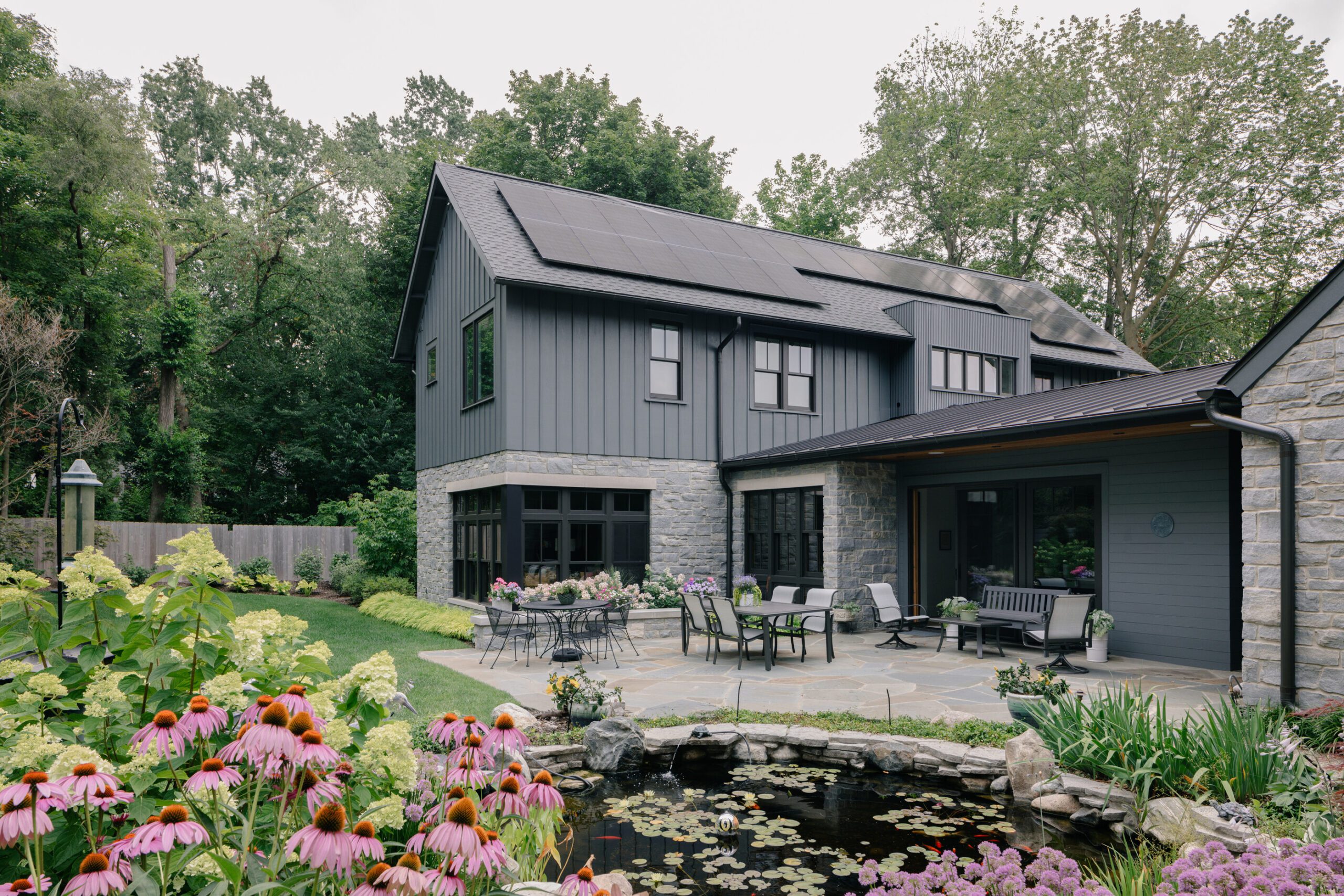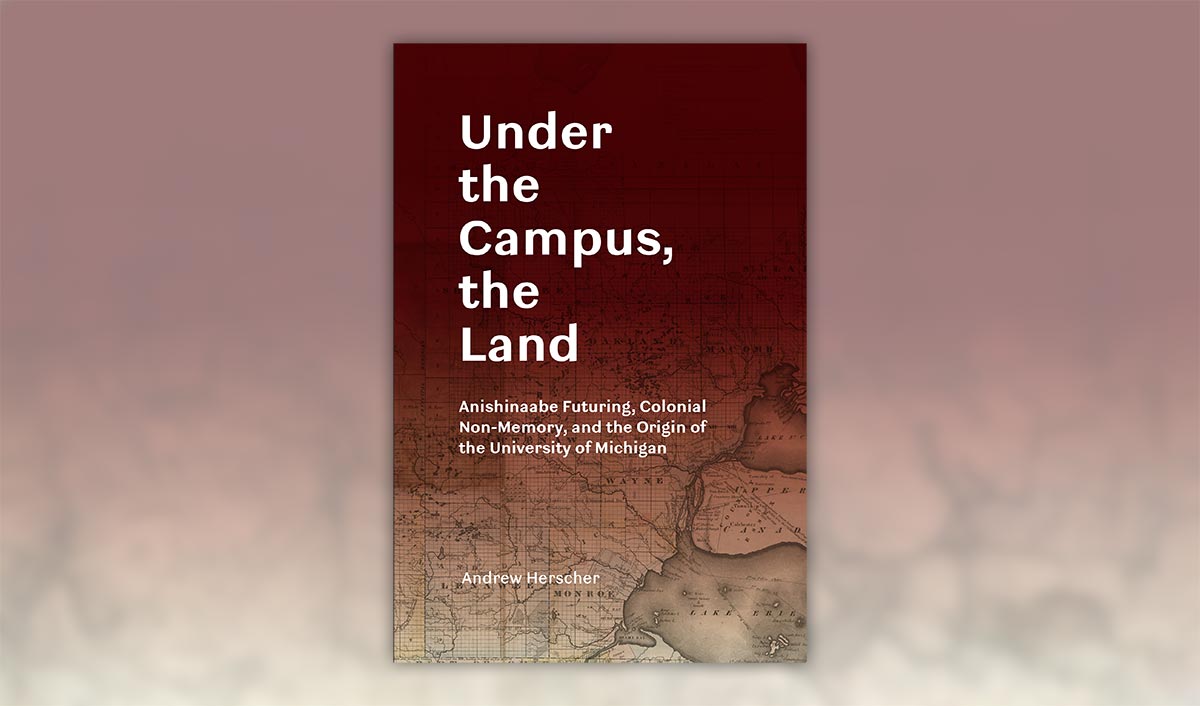
Robotically Fabricated Structure Receives Global Future Design Award
Robotically Fabricated Structure (RFS) has been named a Gold Winner in this year’s Global Future Design Awards. The Global Future Design Awards is an annual awards program organized by Architecture Press Release, a leading body of architecture press in Global. This award recognizes outstanding ideas that redefine design in architecture through the implementation of novel technologies, materials, programs, aesthetics, and spatial organization.
RFS, created by Arash Adel, assistant professor of architecture, and his team at ADR Laboratory, is a robotically fabricated timber pavilion designed with custom algorithms and built through a collaborative human-robot construction process. RFS consists of locally-sourced short lumber, which is processed and assembled into layered modules by industrial robotic arms. These modules are then transported on-site, and human workers attach each sub-assembly in place to build the pavilion. Through its sourcing and operations, the RFS proves itself as a sustainable construction practice with its minimal construction waste and low cost, reevaluating conventional approaches to issues of material use, labor, and the environment.

The pavilion is currently located in the Matthaei Botanical Gardens in Ann Arbor, Michigan. Designed for public engagement, it acts as an open-air gathering point within a public conservatory. Its configuration took into consideration the site’s views, approach, and traffic flow, resulting in a curved, porous structure visible from the park’s roads. The pavilion’s design includes an enclosed walkway for exhibitions or intimate conversations, an exterior seating area, and a raised platform for public events and performances.
RFS is designed and fabricated by ADR Laboratory, research assistants, and students of the University of Michigan’s Taubman College M.S. in Digital and Material Technologies program. It explores the conversations about automation use in construction and the architecture, engineering, and construction community’s shifting responsibility to find creative solutions to construction inefficiencies and the impacts of climate change.









